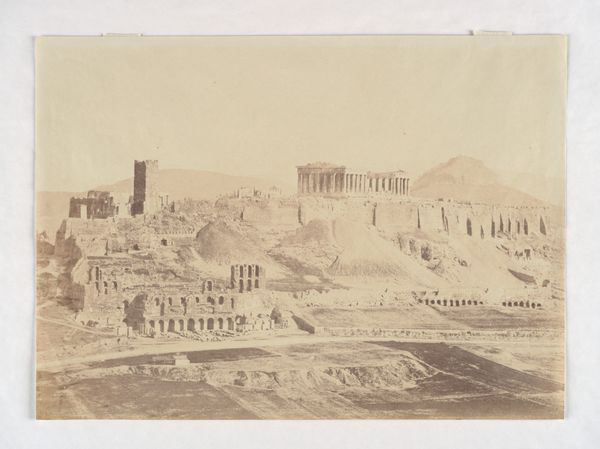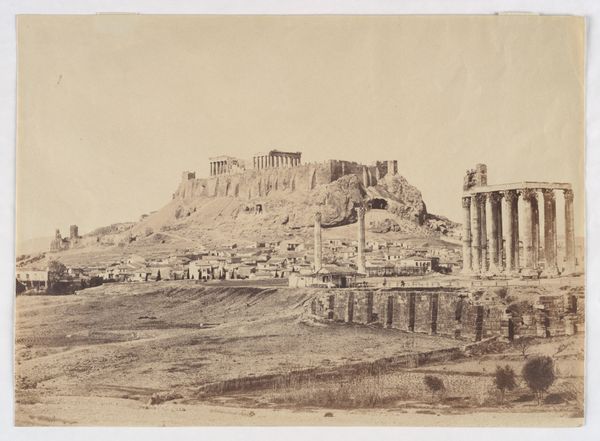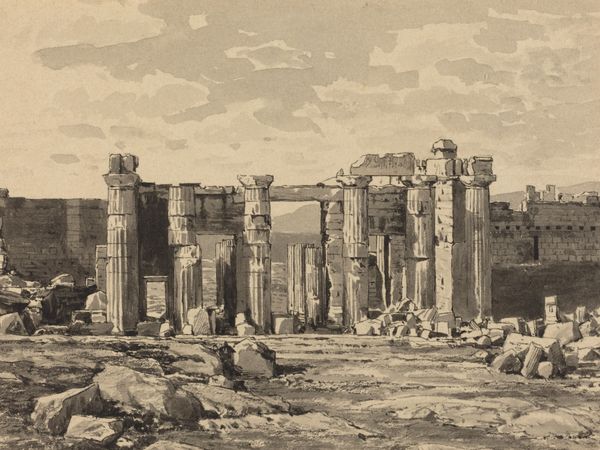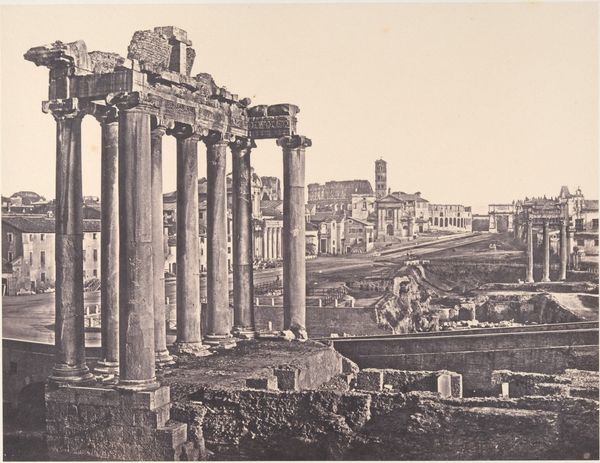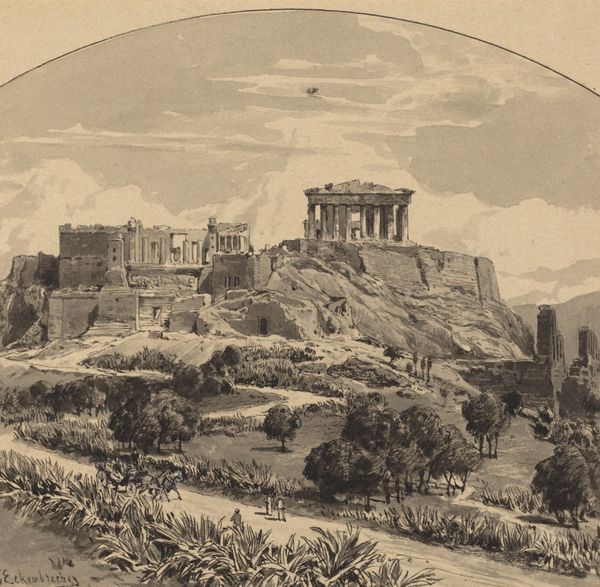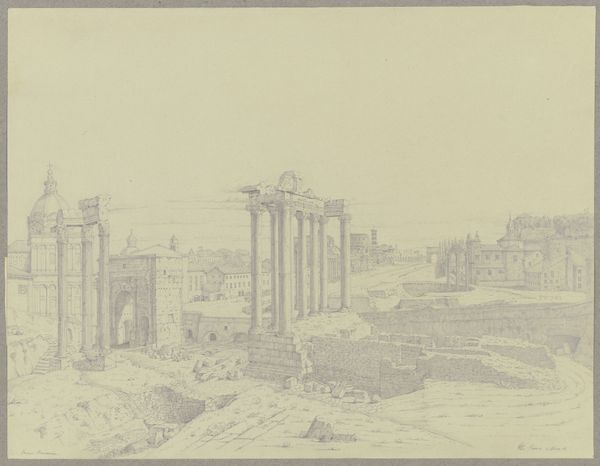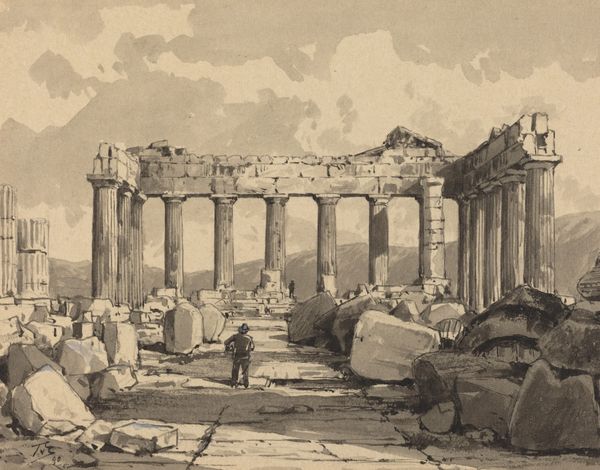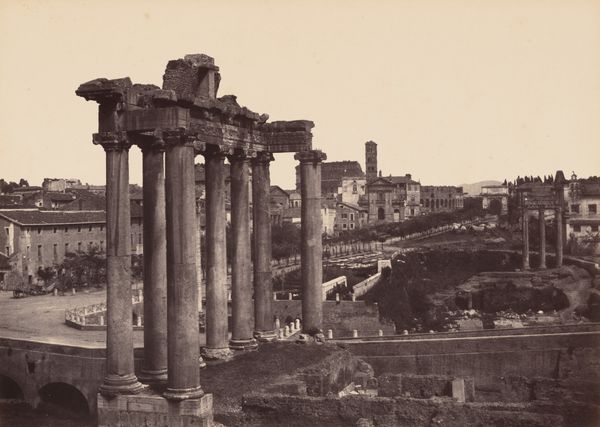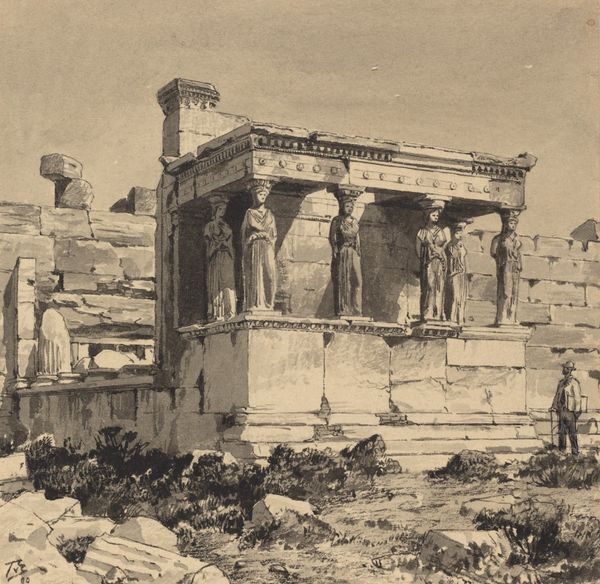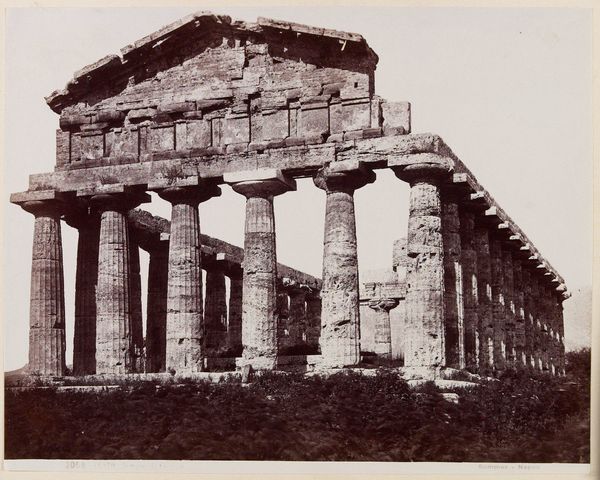
Dimensions: Overall: 16.2 x 26.5 cm (6 3/8 x 10 7/16 in.) support: 33.7 x 48.8 cm (13 1/4 x 19 3/16 in.)
Copyright: National Gallery of Art: CC0 1.0
Editor: This pencil drawing, "View of the Acropolis" by Themistocles von Eckenbrecher, was created around 1890. It has such a hauntingly majestic quality. I'm curious, looking at this piece, how do you interpret the artist’s decision to depict this iconic landmark in what appears to be a state of ruin? Curator: It’s important to understand the social context surrounding 19th-century views of classical antiquity. Depicting the Acropolis as a ruin wasn’t necessarily a sign of disrespect. Instead, it reflects a romantic fascination with the past, filtered through a lens of colonial power dynamics. What visual cues suggest a relationship to this colonial context? Editor: Well, I notice a distinct absence of people within the drawing. Curator: Precisely. The absence is striking, isn't it? Instead of bustling scenes of Athenian life, we're presented with a landscape dominated by crumbling monuments. Consider that Western European powers, during this period, were heavily involved in archaeological digs and the "preservation" of ancient sites. This kind of imagery, presenting the Acropolis as an empty stage awaiting rediscovery, served to legitimize that intervention. Editor: So, it’s less about pure artistic expression and more about subtly reinforcing existing power structures. Curator: Exactly. Think about how museums during this period acquired and displayed classical artifacts. It's all interconnected. The image and the institution function in symbiosis. Does seeing it in this new light change your perception of the work? Editor: Definitely. I now understand that beyond the aesthetic appeal, there are layers of historical and political implications woven into the artwork. Thank you! Curator: Indeed! By acknowledging those layers, we begin to understand the complex public role art often plays.
Comments
No comments
Be the first to comment and join the conversation on the ultimate creative platform.
